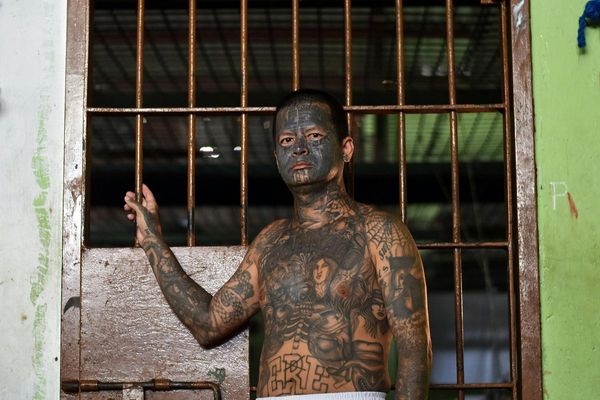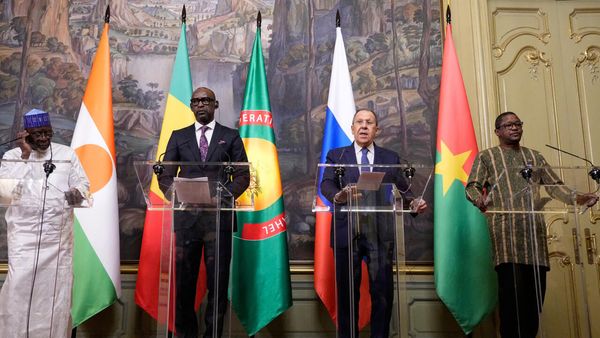
The most heartbreaking story out of the Syrian revolution last week was the opening of the prisons. Over 130,000 people had disappeared into the Syrian prison system, notorious for torturing and killing inmates. As rebels began freeing prisoners who had been held incommunicado for years or even decades, the families of other missing persons scoured government buildings, desperately trying to find out if their loved ones were still alive.
Last Tuesday, CNN claimed to have captured the moment one such missing person was found. While touring the basement of Syria's Air Force Intelligence Directorate alongside Syrian rebels, CNN Chief International Correspondent Clarissa Ward saw something underneath a blanket in a locked cell. One of her rebel escorts shot the lock off the door and lifted the blanket, revealing a terrified man who shouted, "I'm a civilian!"
Embracing Ward and the rebel fighter, the prisoner told his story. His name was Adel Ghurbal, he said, and he had been arrested in the city of Homs three months ago for his social media activity. Ghurbal explained that his captors had beaten him, then fled in a hurry, leaving him in the cell with no food or water for days. Only thanks to CNN and rebels was he able to see the sunlight again.
If the story sounded too good to be true, that's because it was. On Sunday, a Syrian diaspora news outlet called Verify-Sy came forward with a shocking revelation: "Adel Ghurbal" does not exist. Instead, the outlet said, the man from the CNN segment was First Lieutenant Salama Mohammad Salama of the Air Force Intelligence Directorate, the same agency running the prison. (Despite its name, the directorate was a secret police force rather than an aerial reconnaissance branch.)
The next day, Verify-Sy published a photo of Salama in uniform, sitting behind his desk. After the photo was published, CNN admitted that the man was in fact Salama and that he was indeed an intelligence officer. Verify-Sy's team of 12 citizen journalists had caught CNN, the giant of broadcast journalism, in a grievous mistake.
Anonymous sources from Homs told Verify-Sy (and later, CNN) that Salama was an infamous torturer and extortionist. According to Verify-Sy, he had ended up in prison for "less than a month…due to a dispute over profit-sharing from extorted funds with a higher-ranking officer." A resident of Homs said in an interview posted by Verify-Sy to YouTube that "this man was a tyrant, and an oppressor, an oppressor, an oppressor," and that everyone in the neighborhood knew him as a sinister presence at checkpoints.
Even before Verify-Sy published its claims, Syrians had voiced their suspicions about the CNN story. The "prisoner," they said, was too well-groomed and didn't act like someone who had been locked in a dungeon for three months.
"Your 1st instinct as a detainee when someone walks into your cell is to freeze. You don't say a word. 'I am a civilian' seems to be something someone pretending to be a civilian would say," Qutaiba Idlbi, a former Syrian prisoner who now works for the nonprofit Atlantic Council in Washington, wrote on social media on Wednesday. "Something only torture survivors would know: we're not big on physical touch. In prison, the only touch you get is the one from your torturers. It takes time to adjust to the real world."
Idlbi speculated that the man from the clip was "an intelligence officer who didn't escape in time and was hiding since." He was right about Salama's job, if not the circumstances under which he ended up in that cell.
It wouldn't be the first time CNN was apparently bamboozled in its war reporting. Last year, CNN correspondent Nic Robertson, who was embedded with Israeli forces in Gaza, was led to believe that they were hot on the trail of Israeli hostages. An Israeli army officer showed Robertson a chart hanging in a hospital basement, claiming that it showed the names of Hamas members assigned to guard hostages. The chart was, in fact, a calendar with the days of the week written in Arabic. CNN aired the segment, then quietly edited out the dialogue about the calendar in online versions of the video.
Of course, war reporting is difficult, and it's hard to verify every single claim in a chaotic, rapidly developing situation. But the story of the prisoner in Damascus wasn't an offhand comment. CNN not only produced a segment based on the premise that he was telling the truth but also advertised it as an "extraordinary moment" in CNN history. The fiasco demonstrates the danger of foreign reporters parachuting into a place they don't understand in search of a sensational scoop.
Ward isn't the only journalist to do so. Bloomberg reporter Sam Dagher complained on social media about the exploitative behavior of the foreign press corps after Syrian President Bashar Assad fled the Syrian capital: "Distressing reports from friends in Damascus about some of the journalists and social media influencers that have literally flooded the city after Assad's fall who know very little about Syria and are, to give one example, chasing victims of regime torture and rape that preferably speak English!"
The story also demonstrates of why large institutions aren't necessarily the best judges of "misinformation." CNN employs thousands of people and, in many ways, has set the standard for modern American war journalism. Yet a few locals had an intuition that CNN's reporting was off. And that intuition turned out to be completely correct.
The post CNN Presented a Syrian Jailer as a Torture Survivor appeared first on Reason.com.







